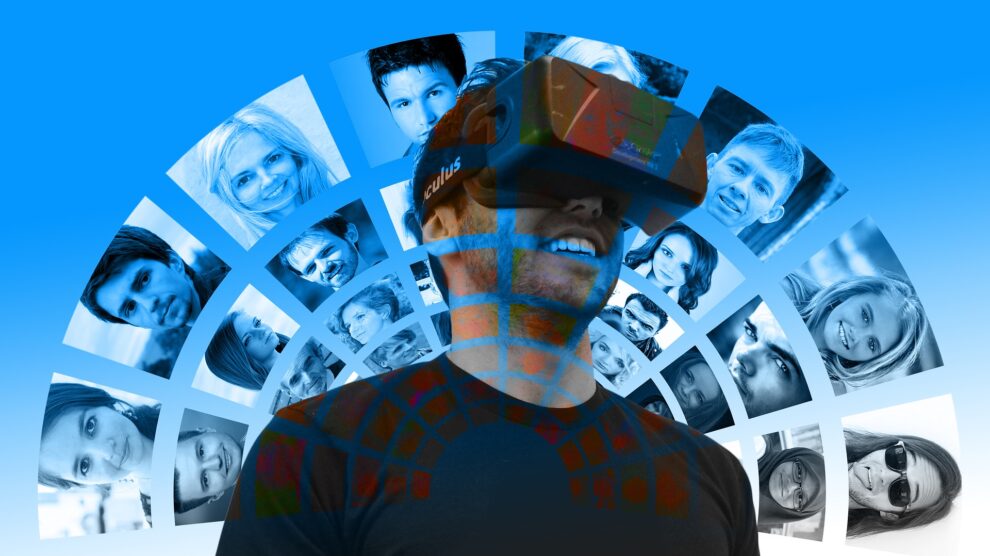When virtual reality is mentioned, epic fight scenes from the Matrix, obsessed video gamers, and 90s sci-fi movies usually come to mind. But in this era, virtual reality has surpassed the world of entertainment and turned into so much more.
What started off as a concept in books and labs is now in application, contributing to several important industries in the world. Be it healthcare, learning opportunities, or business, VR has revolutionized how people experience things.
If you’ve come to find out what the big deal about virtual reality is, prepare to be amazed.
Here’s a brief overview of some sectors and their developments that will give you a clear picture of how virtual reality has truly changed the game.
1. Education
Want to give your students a realistic history lesson? Or teach them about the solar system in a way they’ll never forget? Well, virtual reality will definitely help you with those goals.
It can take your students on virtual trips to the most incredible locations – starting from different eras in time to outer space.
Virtual reality has opened a whole new world of opportunities in the education sector. It can make both teaching and learning more effective and fun through a 3-dimensional and highly interactive environment.
It makes the entire world accessible to kids, right from their classrooms.
But these learning experiences are not limited to only students. Scientists and workers in different sectors, such as the petroleum and aerospace industries, also can benefit from this technology.
Virtual reality can give these important people first-hand lessons with equipment and environments that would otherwise be impossible.
2. Law Enforcement
Virtual reality is a very important part of law enforcement training, especially in developed countries like the US and UK. The military and police have started using VR to stimulate real-life scenarios on the job, with very realistic auditory, visual, and physical stimuli.
Police and military forces can now prepare for all sorts of dangerous circumstances, including terrorist attacks, hostage situations, and open fires in the battlefield, simply by putting on a pair of goggles.
As you can imagine, this has greatly reduced the cost for training, all the while ensuring the safety of the forces.
Recent technology enables total control of the simulated environment, allowing trainers to alter difficulty levels and storylines as they please. This not only teaches the trainee the right protocol for every situation, but it also improves their ability to make on-the-spot judgement calls under stressful conditions.
3. Medicine
Virtual reality has been a total game changer for medicine, in more ways than one. Currently, VR is helping medical students with practical lessons on surgeries and procedures.
This is extremely useful because it provides a safe learning environment where the patients are not at risk. It also gives future doctors a much better idea of working on real bodies.
VR is also being used for treating chronic pain. Pain management is usually heavily dependent on medication, which might end up being addictive and harmful to patients. Instead, VR provides a healthy distraction from the pain, helping patients feel relief.
Several studies have actually shown that VR treatment significantly reduces pain in patients. It is even being used by some women to deal with the pain of childbirth.
As recently as 2017, burn victims started using this technology to tackle pain when their bandages were removed.
4. Automotive Industry
You know all those beautiful, modern cars designed by well-known brands like BMW, Ford, and Jaguar? Well, before actually being produced, the ideas come to life through virtual reality.
Virtual models of the cars are designed by teams and sent in for feedback and approval. This process allows them to make all sorts of alterations easily, starting from changes in build to minute details such as the color of the wheel.
This is insanely beneficial for the automotive industry, since it saves them millions on the design process. Without virtual reality, these companies would have to make actual prototypes for every change they wanted to make, which would be quite expensive and thus put a limit on creativity.
The use of such advanced technology can be seen in Ford’s Studio 2000X program. Designers and engineers are able collaborate together from different locations in virtual space and walk around, viewing all the layers of the car.
5. Sports
Virtual reality is becoming increasingly popular in the sports world, with basketball, football, snowboarding, and NASCAR being prime examples. In fact, 2018 Winter Olympics gold medalist skier, Mikaela Shiffrin, who used STRVR for training, can definitely be counted as a virtual reality success story.
Virtual reality is used for training athletes, giving them the opportunity to scrutinize their techniques down to every detail and thereby improve their performance.
Vital information such as the players’ heart rate and their distance and speed can also be analyzed, allowing coaches to plan out their strategies more efficiently.
This technology has also revolutionized the way viewers experience a game on screen. With companies like NextVR and LiveLikeVR, it is now possible to watch live-streamed sports events in virtual reality without actually leaving your house.
And if the broadcasting is in 360 degrees, you’ll even be able to view games from different locations in the stadiums.
6. Mental Health
Although still in the early stages, virtual reality has contributed greatly to mental health. Currently, it is being used as the main treatment for post-traumatic stress, especially in veteran hospitals.
For example, Bravemind is a software that reenacts the traumatic events that soldiers have previously experienced. It allows them to face their fears in a safe environment and helps reduce the PTSD effects.
This VR exposure therapy can also be used to treat other mental health issues, including anxiety, depression, and phobias. And to make matters more interesting, it can also be used in the assessment of mental disorders, making diagnosis faster, easier, and much more accurate.
Normal methods of assessment involve questionnaires and interviews, which is seen from the patient’s perspective. This can very easily lead to misdiagnosis or confusion. By using virtual reality, however, patients can be put in scenarios where their symptoms are clearly visible.
7. Marketing
VR has changed the face of advertising, allowing viewers to connect with the products being sold to them. Coca Cola was one of the first brands to adapt this virtual marketing method, using it for their unique 2015 Christmas advertisement in Poland.
Oreo too made a memorable interactive 360i VR ad in 2017 that takes viewers on a fun and whimsical journey to a magical land. And Netflix advertised their reality competition show Ultimate Beastmaster in 2017 with a bang as well, making it exciting by letting viewers see the obstacles just as the contestants would see them.
Companies such as ATV now let customers go on virtual test drives with their vehicles. Others (Stubhub) allow customers to view which angle they’ll be seeing the event from before buying seats.
Renowned universities, including Princeton and Yale, have jumped on this marketing train, offering virtual campus tours for interested students.
8. Tourism
Wouldn’t it be cool if you could get a preview of your vacation before committing to a package? What if you’re undecided between visiting the Bahamas and the ancient city of Rome? Or what if you’re not sure which hotel to pick?
Sure, Google images and reviews will give you an idea. But experiencing it first and then making your choice would be a lot more beneficial. You may have heard about this concept already, with the creation of Google Expedition.
Google Expedition allows people to visit every corner of the earth in a very realistic manner, all from the comfort of their own home.
The tourism industry has also followed suit, also taking help from virtual reality technology. You can now go on virtual guided tours of tourist resorts, hotels, and all sorts of places.
9. Housing and Architecture
Virtual reality really has made strides in how housing is designed and sold. While 3D designing has existed for years, virtual reality has really upped the game on a whole new level.
Architects and homeowners alike can now design using virtual spaces, making any kind of changes they want at the snap of a finger.
This technology is also being used to sell real estate, which is beneficial for both the seller and the customer. People looking to buy homes can experience the space at great depth, without actually being there.
This saves both parties time and money, and also gives the customers a much clearer idea on what they’re paying for. This has been made easy by companies like Matterport, which scan all the houses on sale to make them available in the virtual world.
10. Retail
Nowadays, online shopping is all the rage. But although online shopping has its perks, there’s still a lot to improve.
Sizing is something that’s very difficult to get right, especially if you don’t fall under the normal ranges. So, buying clothes online entails making guesses and having to send them back if they don’t fit.
With the introduction of virtual reality and body scanning, this problem can easily be solved. People can use their own body measurements to create a virtual version of themselves and try on the clothes.
Virtual reality shopping is still a new concept under works, and a lot of companies have teased the idea. Ebay Australia actually collaborated with Myers to launch a virtual reality department store with a very cool “sight search” feature that lets customers find information on a product simply by staring at it.
11. Entertainment and Recreation
Finally, the sector we all know and love – entertainment and recreation. This is probably the most popular platform for virtual reality that has been an example for all other sectors to follow. In 2017 alone, virtual reality gaming earned $2.2 billion.
VR in gaming is now in great demand, and companies like Nintendo, Xbox, and Playstation are truly benefiting from all the attention. These games can be quite expensive and come with high-quality headsets and controllers.
However, people who cannot afford all this can still experience virtual reality through VR apps and the affordable Google Cardboard Glasses.
Virtual reality is being used in movies and theaters as well. For example, Warner Bros. released the Justice League VR movie, which was a crowd favourite at IMAX theatres.
The technology has also crept its way into more real-life recreational venues, including theme parks, concerts, and gallery and museum tours.
Final Thoughts
After reading all of that, you too have probably become a fan of virtual reality. And why not? Who doesn’t want a more immersive and fun way to do mundane things like shopping?
What’s exciting is that despite being at the initial stages, virtual reality is helping the world in so many ways already. Imagine what’s in store when it gets developed even more, and the projects under work come to life.
The possibilities are endless, and thankfully, scientists are determined to use and advance the technology. And as companies work to make the technology more affordable, VR will become more accessible to us normal people as well.
So, who knows what the future holds? Maybe one day, we’ll be able to have our lunch breaks at the beach while really sitting at our office desk.
What’s certain is that the future with virtual reality is definitely looking bright!





